Range 11,019 km Wingspan 26 m Weight 15,460 kg | Top speed 953 km/h Cruise speed 900 km/h Length 23 m | |
Unit cost 52,300,000–52,300,000 USD (2008) | ||
Dassault falcon 7x
The Dassault Falcon 7X is a large-cabin, long-range trijet manufactured by Dassault Aviation, the flagship offering of its business jet line. It was first presented to the public at the 2005 Paris Air Show. The Falcon 8X is derived from the 7X with longer range afforded by engine optimizing, aerodynamic refinements and an increase in fuel capacity. It is one of only two trijets in production, the other being the Falcon 900. It features an S-duct central engine.
Contents
- Dassault falcon 7x
- Dassault falcon 7x beautiful twilight take off at bern
- Falcon 7X
- Price
- Design
- Pitch trim incident
- Teterboro London City record
- Falcon 8X
- Civil operators
- Government and military operators
- References
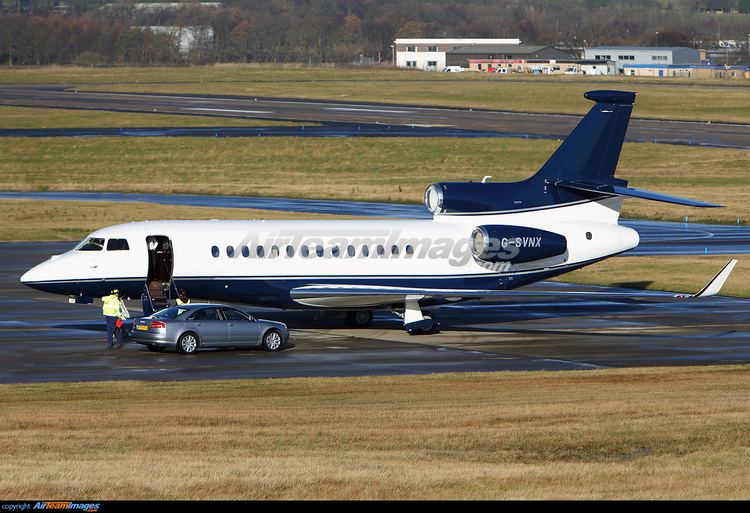
Dassault falcon 7x beautiful twilight take off at bern
Falcon 7X
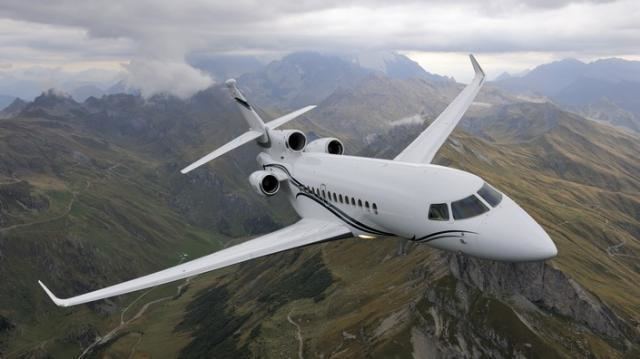
The aircraft has received its type certification from both the Federal Aviation Administration and European Aviation Safety Agency (EASA) on 27 April 2007. The first 7X, MSN05, entered service on 15 June 2007. The hundredth was delivered in November 2010. It conducted high altitude airport tests at 14,500 ft in Daocheng in 2014.
Price
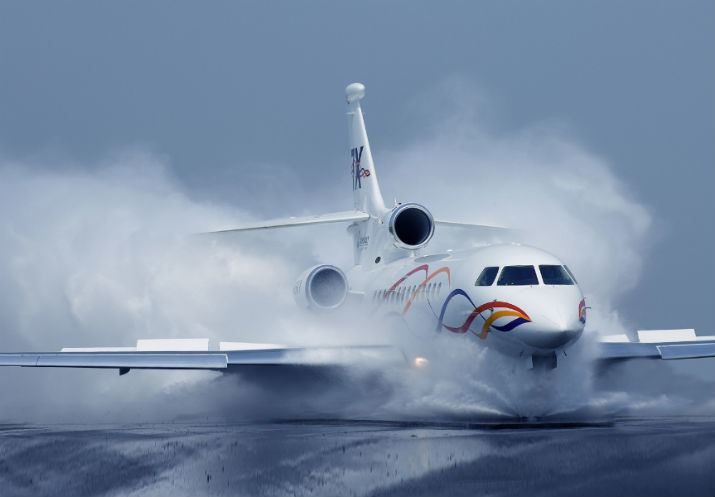
In 2001, the Falcon 7X, at approximately $35 million (preproduction order price), was nearly $10 million cheaper than its nearest competitors in the long-range, large cabin market segment, including the Gulfstream G550 and Bombardier Global Express. Its 2007 price was $41 million. In 2008, the smaller Global Express 5000 was priced at $40M.
Design
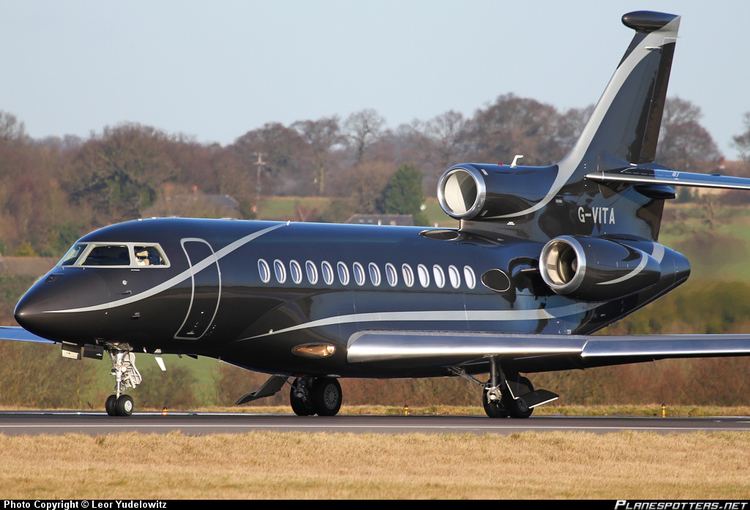
The Falcon 7X is a three-engined cantilever monoplane with a low-positioned, highly swept wing. It has a horizontal stabiliser at mid-height and a retractable tricycle landing gear, and three rear-mounted Pratt & Whitney PW307A turbofan engines : two on the side of the fuselage and one in a center position, and room for 20 passengers and two crew. It is the first production Falcon jet to offer winglets.
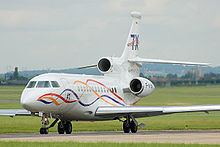
It is the first fully fly-by-wire business jet and is equipped with the same avionics suite, the Honeywell Primus Epic "Enhanced Avionics System" (EASy), that was used on the Falcon 900EX and later on the Falcon 2000EX.
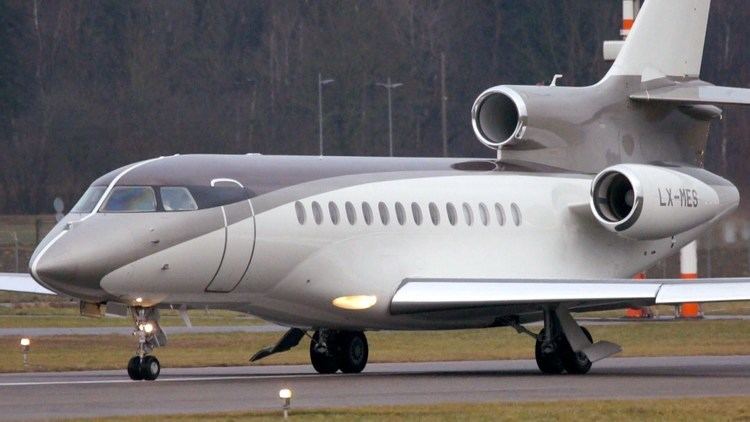
The Falcon 7X is notable for its extensive use of computer-aided design, the manufacturer claiming it to be the "first aircraft to be designed entirely on a virtual platform", using Dassault Systemes' CATIA and PLM products.
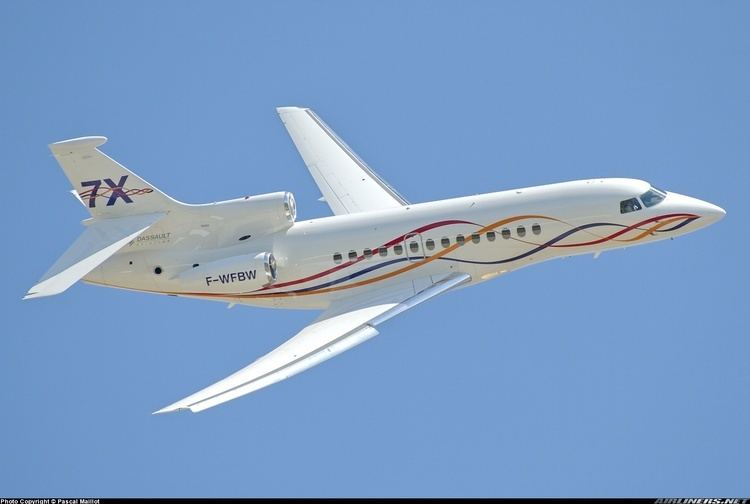
In February 2010, Dassault Falcon and BMW Designworks were awarded the 2009 Good Design Award by the Chicago Athenaeum and the European Centre for Architecture Art Design for their collaboration on the new Falcon 7X interior option.
Pitch trim incident
EASA grounded the Falcon 7X fleet after a report from Dassault Aviation regarding “an uncontrolled pitch trim runaway during descent” in one of its jets in May 2011. The aircraft pitched up to 41 degrees, with the load factor increasing to 4.6g, it climbed from 13,000 to 22,500 ft and the airspeed went from 300 to 125 kts.
"This condition, if occurring again, could lead to loss of control of the aeroplane," the EASA notice said. Initial results of investigation showed that there was a production defect in the Horizontal Stabilizer Electronic Control Unit which could have contributed to the cause of the event. Dassault Aviation developed modifications in June 2011 to allow a return to flight.
After four years of investigation, the Bureau d'Enquêtes et d'Analyses pour la Sécurité de l'Aviation Civile published its Final report in June 2016. It was found that incorrect nose-up commands to the trimmable horizontal stabilizer were caused by a soldering defect on the pin of its electronic control unit provided by Rockwell Collins.
Teterboro-London City record
On May 2, 2014, Dassault Falcon pilots Philippe Deleume and Olivier Froment set a new speed record for the Falcon 7X on a 5 hr 54 min flight from New York Teterboro Airport to London City Airport with three passengers on board.
Falcon 8X
The 6,450 nm (11,945 km) range Falcon 8X was announced at the European Business Aviation Convention & Exhibition in May 2014. Its cabin is 3.5 feet longer than the 7X. With improvements to wing design and improved Pratt & Whitney Canada PW300, the 8X is up to 35% more fuel efficient than its competitors.
The prototype, registered F-WWQA, first flew from Bordeaux–Mérignac Airport on 6 February 2015. The Falcon 8X was added as a subtype of the Falcon 7X on the EASA type certificate on 24 June 2016 as modification M1000 for S/N 0401 and ongoing. Dassault delivered the first Falcon 8X on 5 October 2016 to Greek business aviation operator Amjet Executive.
Civil operators
More than 260 Falcon 7X have been delivered between mid-2007 March 2016 and the fleet was flown more than 440,000 hours. 117 aircraft are in Europe, 45% of the fleet : 18 in Switzerland, 13 in France, eight in Luxembourg, seven in Belgium, Denmark, Germany and Portugal, six in Russia, four in Ukraine among others. Antwerp's Flying Group operates five aircraft, Shell Oil has four in Rotterdam and Dassault Falcon Service at Paris-Le Bourget manages four, as does Volkswagen AG in Wolfsburg. 20% of the fleet is in North America : more than 50 in the U.S., six in Canada and five in Mexico. In Asia-Pacific, 14 are in Hong Kong and 11 in China among others.
